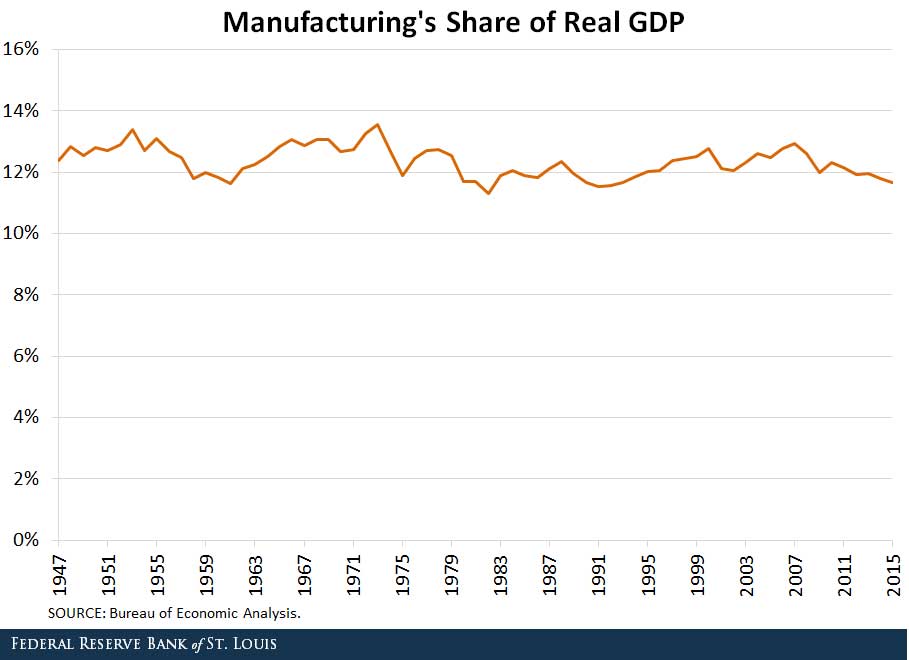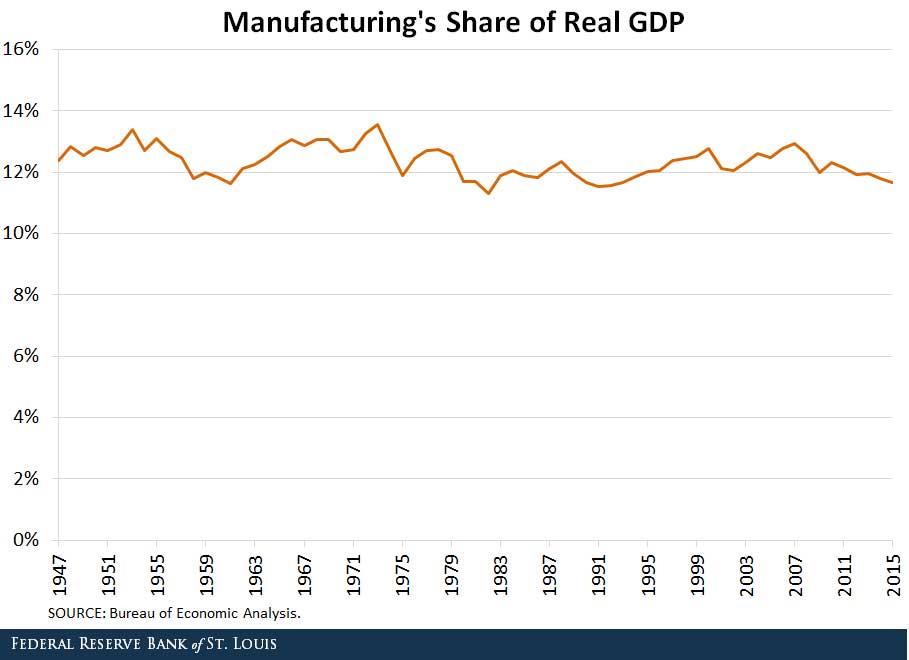These days whenever we talk about manufacturing, the number 1 thing that came to people’s mind is that it is shrinking. And that it is a small pie of an economy.
The truth is that according to the US government definition of manufacturing, it has been been sitting steady at around 12% of Real GDP for the last 7 decades. See the picture posted at the Fed St Louis website:

The reason people have the conception of declining share of GDP is for one simple reason: prices have been increasing.
But a more important question is: Given the the manufacturing sector is 12% of the total output, so what?
That brings to the central issue: the manufacturing sector is sitting at the center of a web of value chains, creating economic activities and jobs up and down the chain.
Think about it. If a factory produces a computer, then someone needs to do research and design, and someone needs to engineer the product before making it. And then someone needs to write programs and apps for it. Some needs to ship it, store it, and sell it. Someone needs to keep financial records of all the transactions associated with the computer, and someone needs to service it. All those activities are not manufacturing, but are all created because of the manufacturing of a product.
According to a calculation in this logic by the MAPI Foundation , “one dollar of domestic manufacturing value-added destined for manufactured goods final demand generates another $3.60 of value-added elsewhere”. For each manufacturing job, it generates about 3.4 other jobs throughput the economy.
The result is intuitive. Without people making stuff, the activities we do on a daily basis will not simply exist: shopping, travel, education, health care… They exist and prosper because someone is manufacturing all the goods that allow us enjoy all those things.

Leave a Reply
You must be logged in to post a comment.